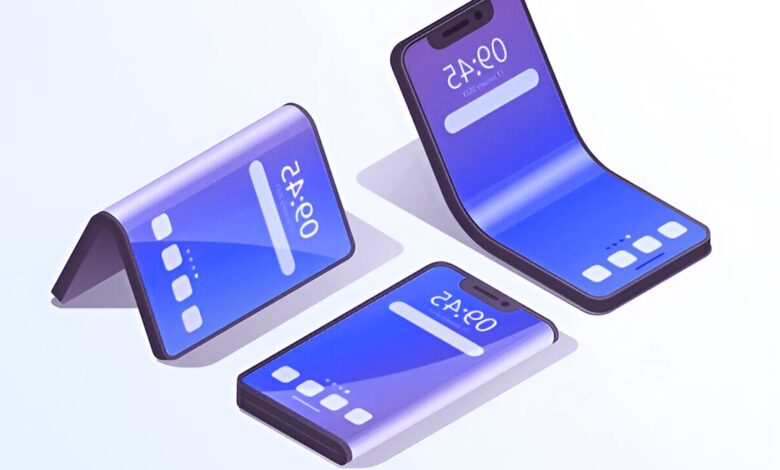The Future of Foldable Phones: Are They Worth It?
In this article, we will take a deep dive into the world of foldable smartphones, evaluating their advantages, challenges, and the potential they hold for the future of mobile tech.

In recent years, foldable phones have evolved from a futuristic concept to a tangible product that’s changing the landscape of mobile technology. With manufacturers like Samsung, Huawei, and Motorola pushing the boundaries of smartphone design, foldable phones are garnering attention for their innovative features, design flexibility, and impressive technological advancements. However, despite their allure, the question remains: Are foldable phones worth it?
In this article, we will take a deep dive into the world of foldable smartphones, evaluating their advantages, challenges, and the potential they hold for the future of mobile tech. Let’s explore the pros and cons, the current state of the market, and where this exciting technology could be headed.
What Are Foldable Phones?
Foldable phones are a new breed of smartphones that allow the user to fold or unfold the device, enabling larger screen sizes without sacrificing portability. These phones typically feature an advanced flexible display technology, such as OLED, which allows the screen to bend or fold without damaging the display.
There are two main types of foldable designs:
- Clamshell-style foldable: This design allows the phone to open and close like a clamshell, with a vertical fold (similar to old flip phones).
- Book-style foldable: The phone opens like a book, offering a larger screen that can expand for immersive experiences when unfolded.
The concept of foldable phones offers the best of both worlds: a compact, pocket-sized device when folded and a large, expansive screen when unfolded.
The Pros of Foldable Phones
1. Enhanced Portability and Convenience
One of the key benefits of foldable phones is their portability. Unlike traditional smartphones, which require larger form factors to accommodate larger screens, foldables can offer a larger display while still fitting into your pocket. Whether it’s a clamshell design or a book-style fold, foldable phones allow users to carry larger screens without compromising on size or weight.
The compact design of foldable phones makes them a versatile option for those who want the convenience of a big-screen experience but need something lightweight and easy to carry around.
2. Multitasking and Productivity
The larger, unfolded screens of foldable phones allow for multitasking capabilities that are simply not possible on traditional smartphones. For instance, users can easily run two apps side by side, drag and drop files, or open multiple tabs for browsing or work-related tasks.
Foldable phones are an ideal tool for users who want a smartphone that doubles as a mini-tablet. Many foldable phones come with advanced multitasking features that allow you to run two or three apps simultaneously, which can improve productivity.
3. A Superior Multimedia Experience
Foldable phones provide an immersive multimedia experience. When unfolded, their larger displays create a more cinematic feel, whether you’re watching a movie, playing a mobile game, or even browsing through photos. The display is bigger, more vibrant, and offers better contrast, which enhances the visual appeal of all content.
The expanded screen size makes these phones especially appealing to entertainment-focused users. Whether it’s gaming or streaming content, foldable phones offer an experience closer to that of a tablet or even a laptop, yet with the portability of a traditional phone.
4. Innovative Design and Future-Proofing
Foldable phones represent a major leap forward in smartphone design, combining cutting-edge technology with a sleek, futuristic appearance. This innovation positions them as future-proof devices that demonstrate the next wave of mobile technology.
For tech enthusiasts and early adopters, foldable phones represent a way to stay ahead of the curve. They are the epitome of technological progress and represent the future direction of mobile devices. Owning a foldable phone is a statement of embracing the future, something that appeals to those who value innovation.
5. Increased Durability and Flexibility
While early foldable phones had issues with durability, improvements in technology have allowed for stronger materials and better designs. The flexible OLED displays and reinforced hinges used in modern foldable phones are more durable than ever, reducing the risk of cracks or damage.
Moreover, foldable phones tend to be more versatile than traditional phones. Their foldable nature makes them less likely to suffer from screen cracks or damage due to accidental drops.
The Cons of Foldable Phones
1. High Price Point
One of the major drawbacks of foldable phones is their expensive price. Due to the complex technology required to create foldable displays, these devices tend to be priced much higher than their traditional counterparts. At launch, devices like the Samsung Galaxy Z Fold and Huawei Mate X were priced in the $2,000 range, making them less accessible to the average consumer.
For many users, the high cost of foldable phones may outweigh the benefits, especially if the device doesn’t offer significant improvements over a traditional flagship phone in terms of performance.
2. Durability Concerns
While foldable phones have come a long way in terms of durability, they are still more prone to wear and tear than regular smartphones. The folding mechanism and the screen itself can suffer from stress and strain over time. Additionally, dust or debris can accumulate in the hinge mechanism, which can compromise the device’s functionality.
Although manufacturers are improving their designs to address these concerns, foldable phones still face the challenge of being less robust than traditional, non-foldable phones. This could be a dealbreaker for users who need a phone that can withstand rough conditions or frequent use.
3. App Compatibility and Software Issues
Another challenge that foldable phones face is the app compatibility issue. Many apps are not yet optimized for foldable screens, meaning they may not adjust properly to the larger screen size when unfolded. This can result in a less-than-optimal user experience, with some apps appearing stretched or distorted.
Though manufacturers like Samsung are working on developing software that better adapts to foldable screens, the lack of universal app support is still an issue for many users.
4. Limited Battery Life
Despite their larger form factors, foldable phones often feature smaller batteries compared to traditional smartphones. The folding mechanism and large screen size demand a considerable amount of space within the phone, which can limit battery capacity.
As a result, users may experience shorter battery life than they would with a regular flagship phone. This is especially problematic for users who rely on their phones for extended periods throughout the day.
5. Fragility of Foldable Screens
While foldable displays have improved over time, they are still more fragile than conventional smartphone screens. The flexible nature of these displays means they are prone to scratches, creases, and potential damage if not handled carefully. The foldable screen’s protective layer is also susceptible to degradation with prolonged use, which could affect the screen’s clarity and responsiveness.
Manufacturers are working on solutions to strengthen foldable screens, but they still require extra care to avoid damage.
The Future of Foldable Phones
Despite these challenges, the future of foldable phones remains bright. The technology is evolving rapidly, and as more companies invest in R&D, we can expect several key advancements in the coming years:
- Better Durability: With improved materials and stronger foldable screens, future models will likely be more resistant to wear and tear.
- More Affordable Options: As the technology matures and becomes more widespread, the price of foldable phones will likely decrease, making them accessible to a broader audience.
- Software Optimizations: As app developers adapt to foldable screens, we can expect better support and enhanced functionality across various applications.
- Better Battery Life: As manufacturers find ways to optimize battery performance without compromising on screen size, we can expect foldable phones to offer better battery life.
Are Foldable Phones Worth It?
Ultimately, whether a foldable phone is worth it depends on your personal needs and preferences. If you are someone who values cutting-edge technology, innovation, and a larger screen without sacrificing portability, a foldable phone could be a great investment. However, if you are looking for a budget-friendly, durable, and reliable device, a traditional smartphone may still be the better choice.
As foldable phone technology continues to evolve, their value proposition will undoubtedly improve, making them a more compelling option for consumers in the future. Whether or not they are worth it today largely depends on your willingness to embrace innovation and your specific use cases.
Conclusion
Foldable phones are an exciting development in the world of mobile technology. They offer a range of benefits, including portability, enhanced multitasking, and superior multimedia experiences. However, they also come with significant drawbacks, such as high costs, durability concerns, and app compatibility issues.
As technology improves and more manufacturers enter the foldable phone market, these devices will likely become more affordable, durable, and user-friendly. For early adopters and tech enthusiasts, foldable phones are definitely worth considering. However, for the average consumer, it may be wise to wait for the technology to mature before making the leap.
In the end, the future of foldable phones looks promising, and it’s only a matter of time before they become mainstream devices in our digital world.











